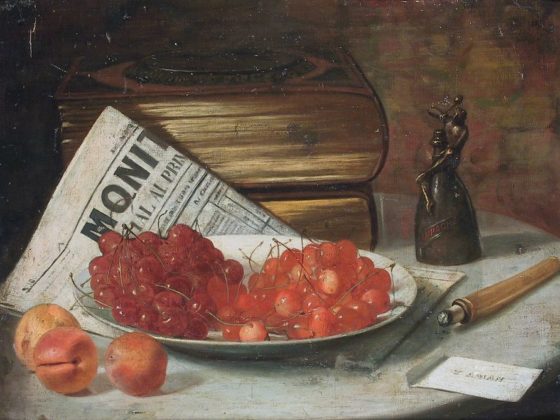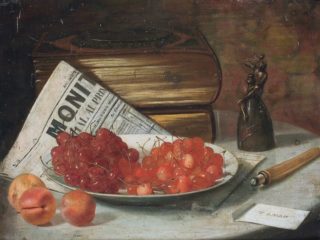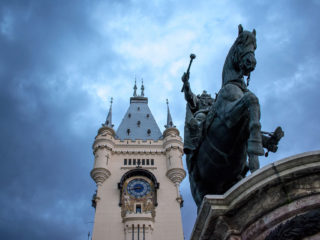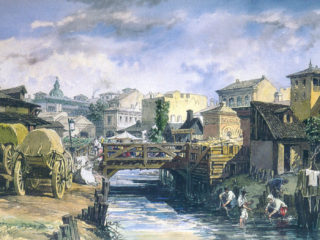“I believe eternity was born in the countryside” said renowned Romanian poet and philosopher Lucian Blaga in one of his most famous poems, The Soul of the Village. Maramureș, with its breathtaking landscapes, wooden churches, ornate gates, and centuries-old traditions, seems to embody this line like no other region in Romania, and visiting it resembles a travel back in time.
Along with spending time with the locals, indulging in local food and general merriment, there are certain places worth seeing in Maramureș. We’re not saying you must see these them, but you definitely should.
The Merry Cemetery in Săpânța
Visiting a cemetery might not be your exact idea of fun, but once you get to know The Merry Cemetery in the village of Săpânța, things could change. Hailed as the best attraction in the historical region of Maramureș, the Merry Cemetery is probably one of the most unusual cemeteries in the world. In the 1930s, Stan Ioan Pătraș, a local artist with a sense of humour and a firm belief that death is not a sad event, but a portal to a next, better life, started painting the wooden tombstones with vivid colours, adorning them with funny poems about the deceased and naïve paintings depicting scenes from the person’s life.
Pătraș’s work is continued by one of his apprentices, and today there are more than 800 painted tombstones that can be visited in the Merry Cemetery all year long. The souvenir shop outside the cemetery sells handmade local products from wool and wood, and the locals would be more than willing to have you try their homemade jams and the local pride and joy, horinca, the traditional spirit drink in Maramureș.
Wooden churches and gates
Religion is taken very seriously in this part of the country. There are almost 100 wooden churches in Maramureș, eight of them being Unesco World Heritage Sites. High timber constructions with slim bell towers, single or double-roofed, they are impressive examples of architecture from various periods and areas.
One of the oldest wooden churches—dating from the 14th century—is in the village of Ieud, in the charming Iza Valley. The church’s wooden interior is decorated with a 17th century mix of folk art, Byzantine painting and biblical quotations in the Cyrillic alphabet. Most of the wooden churches still hold services and it’s not unusual to see locals wearing their Sunday best—traditional costumes of embroidered blouses and skirts and felt aprons.
The oak gates, most often found on Iza, Mara and Coșău valleys are impressive work of folk art, overflowing with symbolism. Traditionally, the gate had a sacred function and was seen as both a way of communication with the outside world as well as protection from evil.
With the pillar gate acting as an axis mundi, most of the gates display archaic, pre-Christian symbols like the sun, signifying life, the tree of life, which represented growth and fertility, the snake, viewed as a guardian of the house, or the wolf fang which stood for power. Rosettas in many forms were viewed as symbols for the beginning of the world.
Memorial of the Victims of Communism and of the Resistance
The Sighet Memorial is housed in a former Stalinist prison that used to imprison people who fought against the resistance between 1948-1950—from schoolchildren and students to peasants—as well as political activists, clergymen and intellectuals, opponents of the communist regime, up until the 1970s. Famously, the inmates at the Sighet prison were incarcerated without a trial and were sentenced to harsh punishments, starvation, and tortures.
Today, the former prison acts as a Memorial to the victims of communist regimes and displays the development and effects of communist regimes in Romania and other countries of Eastern Europe. Each cell is now a museum room, illustrating the prisoners’ lives, and telling the story of a totalitarian system. The riveting bronze sculpture situated in the inner courtyard of the museum—The Cortege of the Sacrificed—is an homage by sculptor Aurel Vlad.
Also in Sighet, Nobel Prize Laureate Elie Wiesel’s memorial house can also be visited. The Holocaust survivor’s most renowned book is Night, a work based on his experiences as a Jewish prisoner in the Auschwitz and Buchenwald concentration camps.
Featured image: Mihai Lucîț / flickr











